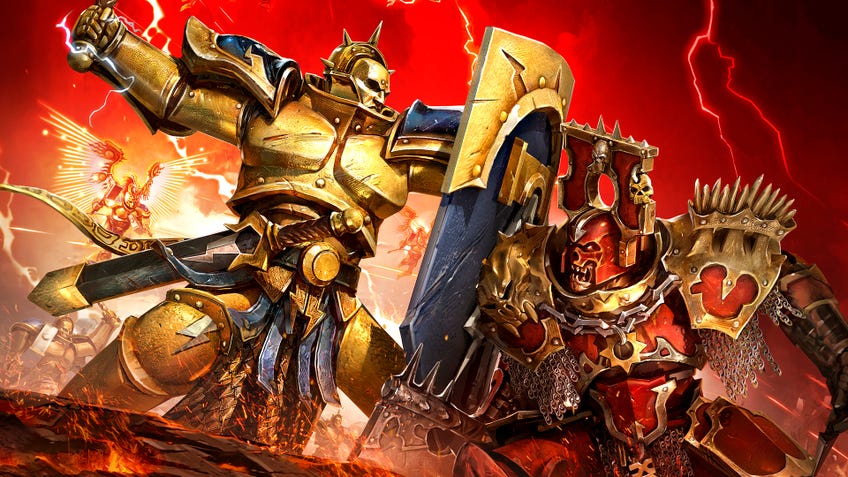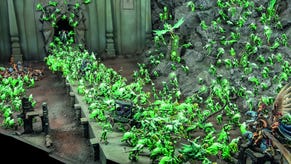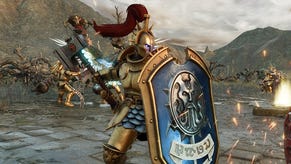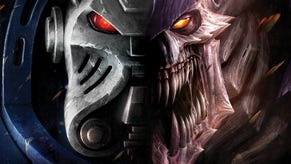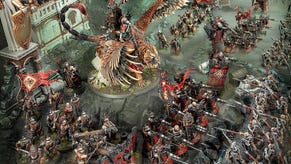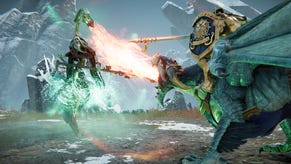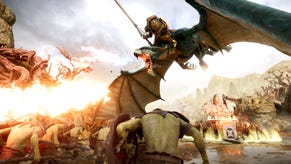How to play Warhammer: Age of Sigmar - and what to buy first
How to play Age of Sigmar, what to buy first and how to get going on a budget.
For over 30 years, Games Workshop produced a tabletop miniatures wargame in a fantasy setting that dealt with regiments and monsters duking it out over the land colloquially known as The Old World. You’ve probably heard of it: Warhammer. After many years, it then released a supplement for the eighth edition of Warhammer Fantasy, End Times, and followed through on its portentous name by blowing up the whole setting.
From the ashes of this setting grew a seed - clinging to it were a few factions and some very loose rules that erred on the comical, known as Age of Sigmar. In contrast to Warhammer Fantasy’s mud and rust, filled with peasants and warriors battling over a packed historical setting, Warhammer: Age of Sigmar was set after a time of myth and monsters in the high fantasy setting of Mortal Realms
In contrast to the squabbling militias of the Empire, Age of Sigmar’s Stormcast Eternals were immortal warriors resurrected and reborn again and again through the power of the God-King Sigmar, clad in Greco-Roman armour that showed off their sculpted musculature and immovable facial features. They are mighty heroes descending from heaven in bolts of lightning, smashing all aside with their colossal hammers.
With the release of the first General’s Handbook in 2016, Warhammer: Age of Sigmar took on a more formal structure akin to Warhammer 40,000, with points and rulebooks combining with an increasing amount of new lore and new factions. It has now built up a huge amount of momentum as a tabletop miniatures game, and is where Games Workshop showcases its most outlandish design ideas and model sculpts.
If you’re wondering how to play Warhammer: Age of Sigmar, what to buy first for the miniatures game and how expensive Warhammer is to get started with, you’ve come to the right place. Read on for a complete beginner’s guide to the beloved miniatures game and its world.
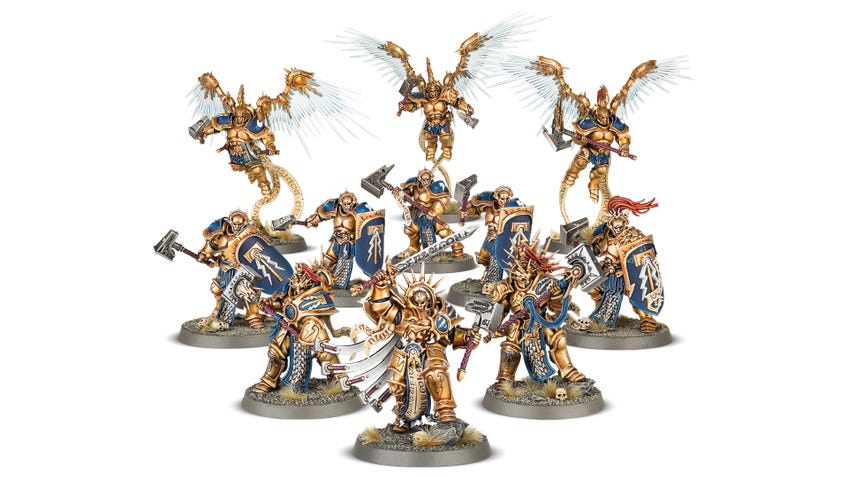
How do you play Warhammer: Age of Sigmar?
Warhammer: Age of Sigmar is a tabletop wargame, so to learn how to play you’ll need at least a table, the rules and your miniatures - ideally painted - as well as accessories such as dice and rulers.
In a game, you’ll face off against an opponent with a force which could be a couple of units or a sprawling army. In a given turn you will pick units to move, cast spells, charge and attack with, using rulers and dice to measure distances and successes. In most games you’ll be using a battle plan to organise your fighting over objectives, enacting command abilities at clutch moments to turn the tide of battle.
Compared to learning how to play Warhammer 40,000, Age of Sigmar is a much quicker and more elegant affair with the majority of the rules featuring on the unit’s profiles, known as warscrolls. The game also has the advantage of having lots of free material - the core rules are available to download for free, as are each unit’s warscrolls - ideal if you just want to throw your freshly-built units on a table and play a quick skirmish game.
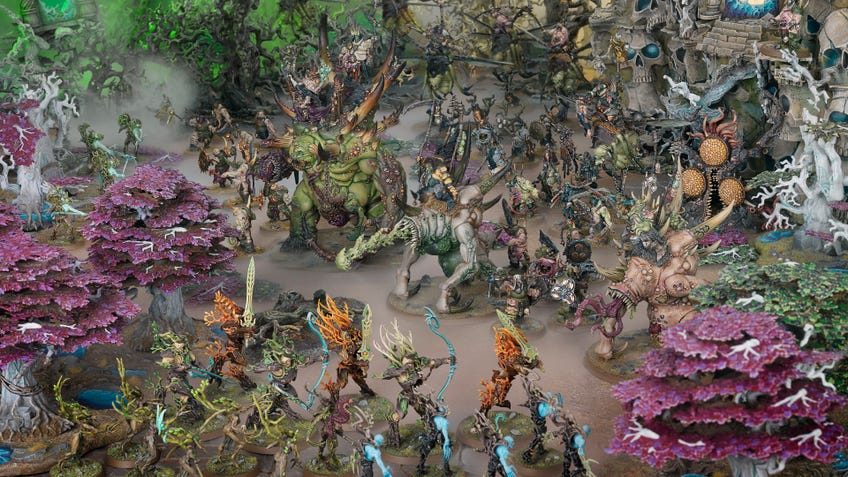
What are Matched Play, Open and Narrative in Warhammer: Age of Sigmar?
The ‘Three Ways to Play’ is Games Workshop’s current method of promoting its tabletop games, with Matched Play, Open and Narrative existing as the main channels for play. Many play Matched Play - a more balanced, rules-based system with a few extra rules involved, and most importantly a points requirement for your armies.
Open is as it suggests: an opportunity to put anything on the table, dropping and adding rules as you and your opponent see fit.
Narrative acts as a blend of both of these, with narrative battleplans shaping your games into heroic last stands are futile assaults.
Games Workshop analyses and refreshes its points for matched play every year with a supplement known as the General’s Handbook: a must if you want to get involved in the competitive scene.
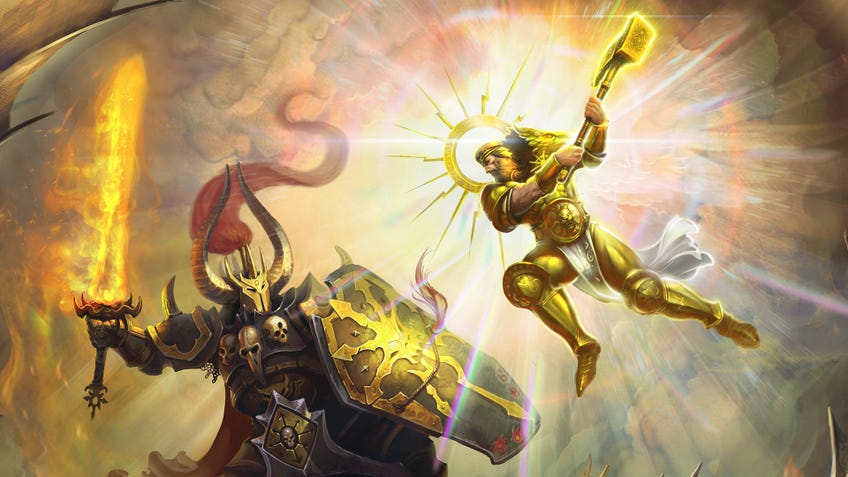
What are the Warhammer: Age of Sigmar factions?
On release Warhammer: Age of Sigmar divided up the old Warhammer Fantasy factions into four broad categories known as Grand Alliances: Order, Chaos, Death and Destruction. These alliances have since been fleshed out with new factions, and existing factions have been rolled together.
Order
Leading the charge from the celestial realm of Azyr are the Stormcast Eternals. Often disparaged as “fantasy Space Marines” they have shaped up to be their own thing over time. Backing them up are a wide swathe of factions, none that could really be considered plainly “good”.
The aelves of Age of Sigmar are vicious versions of their former selves; Sylvaneth are treemen and spiteful spirits that defend Ghyran - the realm of life - from incursions. Dwelling in the deep sea are the Idoneth Deepkin, aelves who harvest souls and ride sea creatures through magically conjured oceans that rage around their enemies. The Daughters of Khaine focus on Morathi’s Dark Aelves, and include Witch Covens that are one of the more brutal factions under the banner of Order.
The stout Duardin are divided into the mercenary Fyreslayers and the mercantile steampunk sky pirate bands of the Kharadron Overlords. Supporting them all are the Cities of Sigmar who collect the mortals of the realms in their vast fortress cities, and the Seraphon: lizardmen of old reinvented as celestial daemons that manifest as the dreams of the Slaan, their magical overlords.
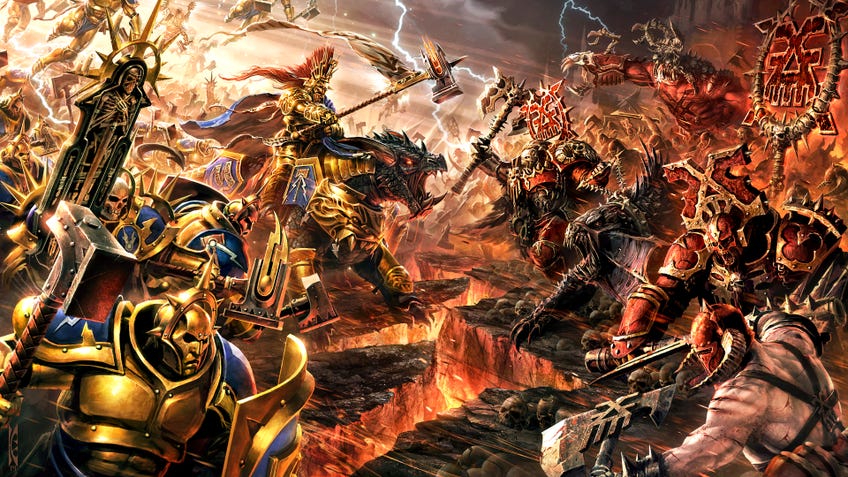
Chaos
In the Warhammer universe, both fantasy and futuristic, there exist the ruinous powers: four gods that manifest based on deep seated emotions of mortal races. They are Khorne: War and Bloodshed, Tzeentch: Change and Magic, Nurgle: Entropy and Decay, and Slaanesh: Perfection and Temptation.
In Age of Sigmar the Chaos gods battle for control of the various realms, frequently clashing with the forces of Order. Their Mortal forces are drawn to the All-Points, where Archaon the Everchosen - saved from the destruction of the Old World by the Chaos gods - rules over the undivided forces known as the Slaves to Darkness. The ruinous powers are also supported by the Skaven - scheming ratmen who battle with vast hordes, mutated beasts and slipshod mechanical weaponry, always happy to stab their allies - and each other - in the back for glory. Finally, wherever the seed of Chaos sprouts, the Beasts of Chaos are sure to flock, Brayherds of savage Goatmen and Minotaurs raid and pillage the realms with abandon.
Death
Death in the Mortal Realms is common. Souls exist as a thing that can be captured and reused, their ebb and flow controlled by Nagash, the god of the dead. From his realms he commands various armies via his Mortarchs, together known as the Legions of Nagash. The legions also contain the spectral Nighthaunt and the Ossiarch Bonereapers - a highly elite faction of bone constructs. Finalising the ranks of the dead are the Flesh-Eater Courts cannibal ghouls who believe they are part of a long-dead royalty, their madness blinding them to their horrible truth.
Destruction
Rounding out the factions are the forces of Destruction. Typified by the rampaging greenskins of the Orruk Warclans, they are also supported by the moon-worshipping, squig-riding Gloomspite Gitz, and the tyrannical Ogor Wartribes.

How expensive is Warhammer: Age of Sigmar?
It’s no lie that Warhammer is expensive, but it’s also a hobby, not a one-off board game. It’s something that you need to be sure you want to get into, and that you think you’ll get something out of. There is a lot of scope for enjoyment beyond simply playing; many hobbyists spend a lot of time building and painting fantastical armies based on the rich fiction - playing is often a minor bonus!
Still, if you want to get involved with a tabletop wargame, Age of Sigmar is one of the best. For a start, the core rules are totally free, which is a huge boon. For people who want to go further, Games Workshop has released all of the current Matched Play rules in its new Gaming book (£15) which take you further. For each army, you’ll need a Battletome which will contain all of the Warscrolls, but also the unique army rules and points values required for Matched Play.
As with learning how to play Warhammer 40,000, there are various starter sets priced from £20 all the way up to £90, which contain various combinations of Stormcast Eternal and Nighthaunt ranges - great starting places for two players to jump in together if they split the cost.
For individual factions you have the excellent Start Collecting! boxes. These range from £50 to £60 and tend to contain a general, a unit and a big centerpiece kit such as a monster or warmachine for a healthy discount. Age of Sigmar scales extremely well at lower levels, making these sets a great way to get started with any army. Generals themselves tend to cost anywhere from £9 to £20, and units are usually £17.50 to £30 depending on their size, making it slightly easier to get into than getting started with Warhammer 40,000 - though be aware, list building in Age of Sigmar requires you to take Battleline: basic units that you must take at least two of at the lowest point bracket.
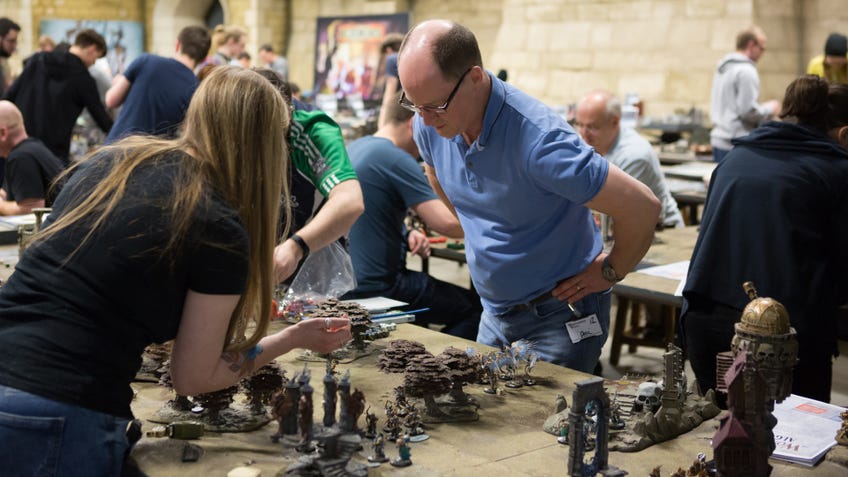
Beyond the main tabletop game, Games Workshop recently released Warcry, an absolutely phenomenal skirmish game that plays quick and strategic games with only a handful of models. Currently to get involved you’ll need the rulebook (£25) and a bunch of terrain, which is where the game really comes alive. There are also a suite of bespoke warbands for Warcry - they cost £25 for a fully-kitted faction and all the cards you need to play them. Everything in Warcry works in Age of Sigmar, meaning you can start small and build your skirmish band into a full army down the line - a great way to slow-grow your hobby!
The best thing about Age of Sigmar is that it’s a whole hobby ecosystem. Many people find this a bad thing as it creates a loop of continuing commitment, but I’d argue that’s what most hobbies tend to do. Games Workshop is leagues ahead of its competition in the creation of miniatures, and there is nothing stopping you using Warhammer models in other skirmish games or even RPGs such as Dungeons & Dragons!
Ultimately, think about what getting into this hobby means to you and why you want to do it. Don’t buy a huge pile of stuff and feel regret as you encounter an insurmountable pile of things to get through - take it slow, and relish the steps. And remember: it’s just a hobby at the end of the day - there to enrich your life, not consume it!
